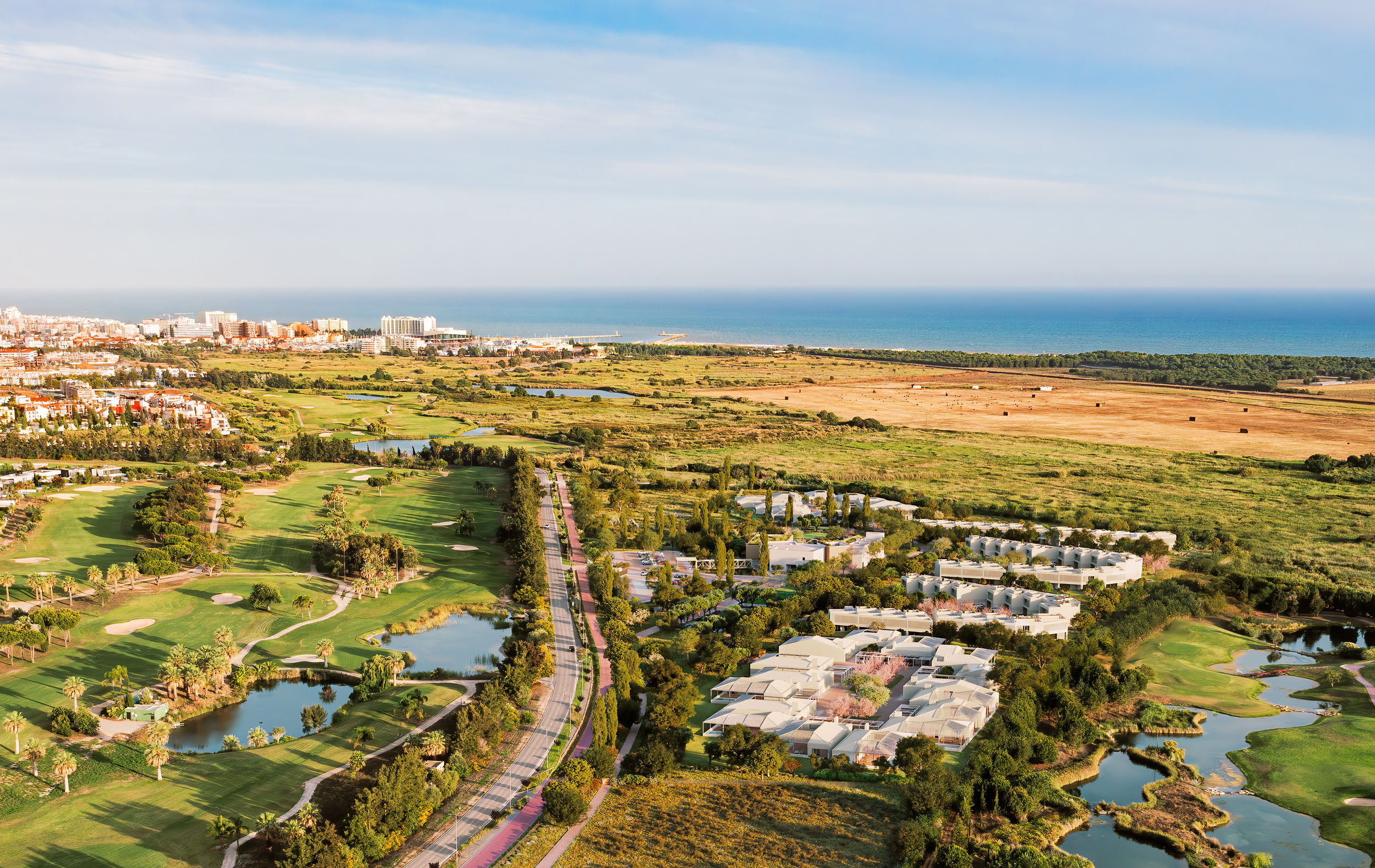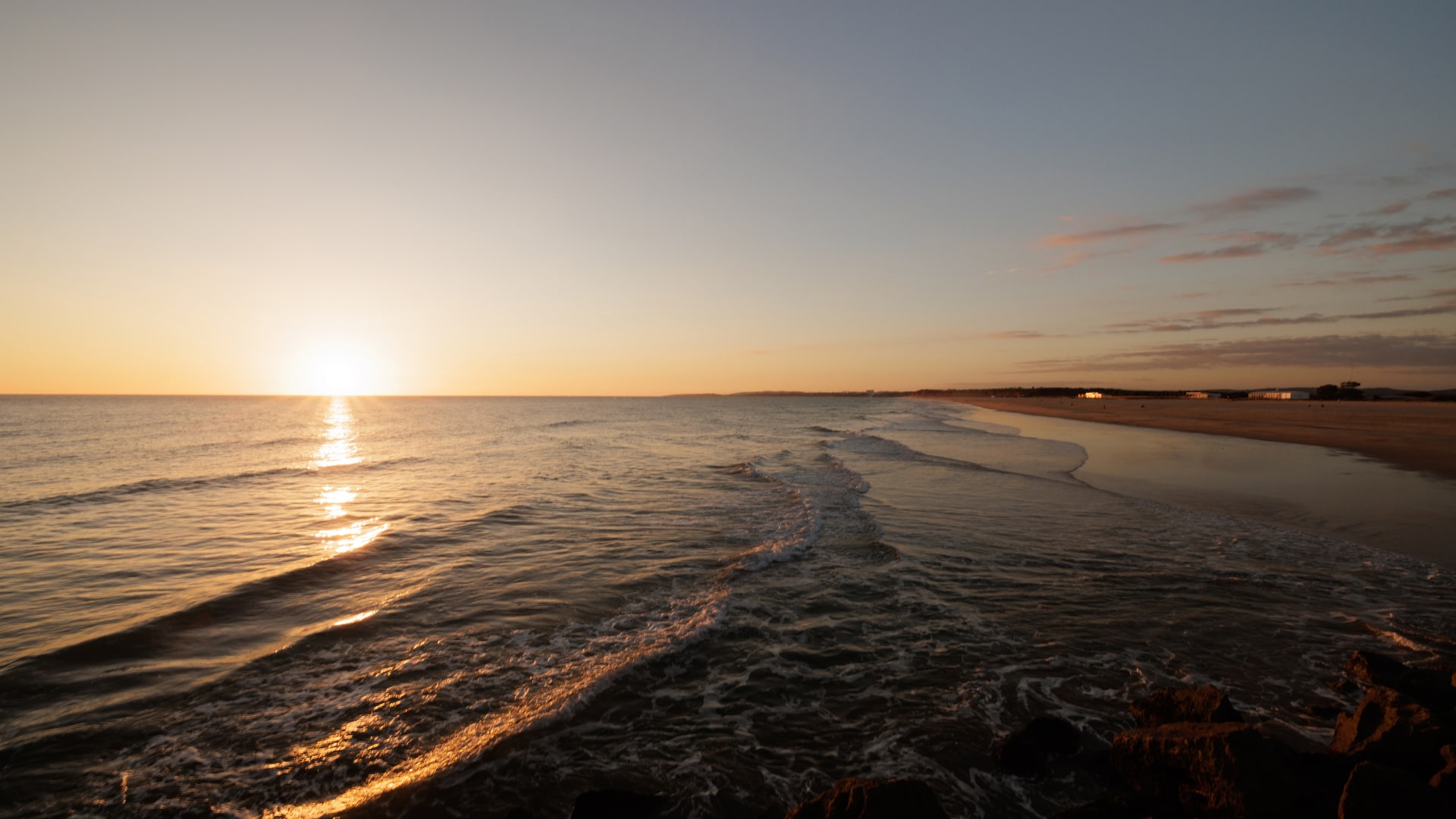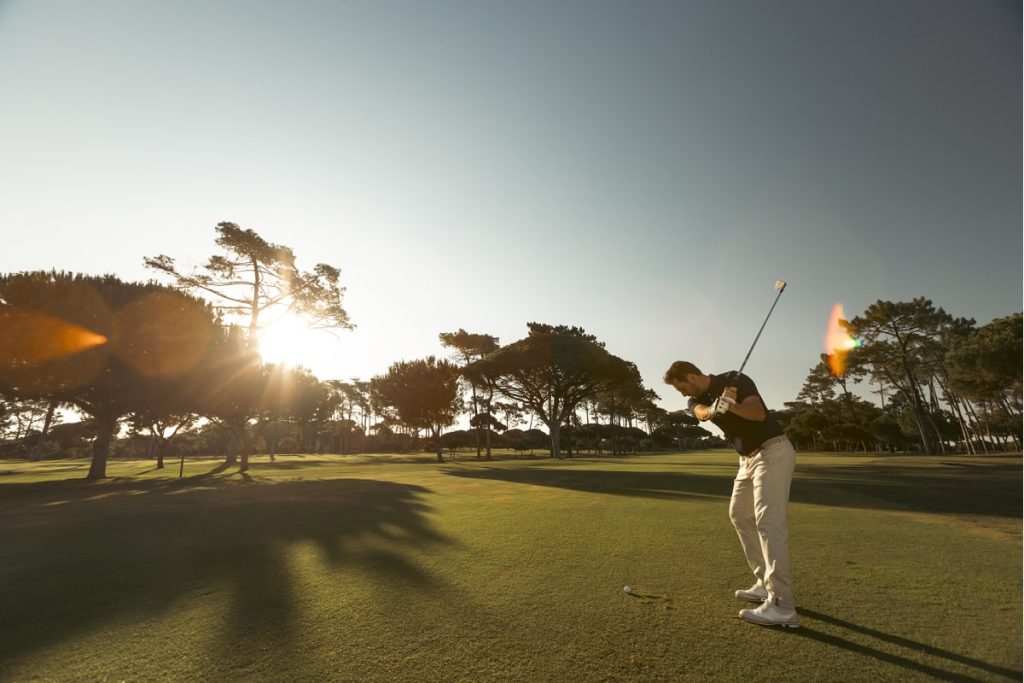The real estate sector significantly impacts both the environment and society. It is an industry that consumes resources, produces CO2 emissions, and generates waste. Integrating sustainability into this sector means planning, designing, constructing, renovating, and managing residential, tourist, and commercial properties in ways that minimize the environmental and societal effects of these activities.
In the particular case of asset management by Vilamoura Lusotur SIC, it’s important to note that the Algarve region suffers from water scarcity. As such, water consumption and management are critical factors in asset management. Consequently, several measures specified for reducing consumption and rationalizing the use of water resources in the Algarve region, as outlined in the Council of Ministers’ Resolution No. 80/2024 of 21/06, are adopted. These include the planned reuse of treated wastewater, expected to be available by 2026 at the Vilamoura Wastewater Treatment Plant (ETAR), and the implementation of the AQUA+ Residential and AQUA+ Hotels Certification in all new construction projects. These certifications assess and establish the water performance of residential buildings and tourist developments on a scale from A+ (most efficient) to F (least efficient) following a water efficiency audit.
The focus on sustainability in asset management is a priority for NORFIN, driven by several factors, including the growing global awareness of environmental preservation, increasingly stringent ESG (Environment Social and Governance) regulations, and the need to save on operational costs. NORFIN is currently defining its ESG strategy for the group, which will be completed by the end of this year. This strategy will set the goals and objectives to be achieved and the data to be reported on ESG matters. NORFIN’s vision for this matter has already been defined: “Investing in, developing, and managing sustainable real estate properties, managing risks, challenging the status quo, and making a positive impact on the communities where we operate, ensuring the quality of life and development of our employees.”
NORFIN’s sustainability mechanisms applied in asset management in Vilamoura are integrated at three levels:
- Planning
At the Planning level, we focus on the conception and development of areas not yet built but that connect built and unbuilt spaces, transition areas that can be enhanced and integrate measures aligned with environmental and social sustainability. At this level, we seek to integrate various measures that meet sustainability criteria, serving as a “guiding thread” for the subsequent phases of project development and asset management.
Highlights include:
- Environmental Certification Systems: We evaluate the use of international environmental certification systems, such as BREEAM COMMUNITIES, in current plans and projects with a Masterplan scale. This certification system has the highest international recognition and the most stringent evaluation parameters, encompassing far more than just the environmental component. It integrates considerations of sustainable mobility, inclusive urban design, water and hydrology efficiency, energy transition, energy efficiency, relations with existing habitats, well-being, noise, and public space quality. The integration of these planning and project principles on a Masterplan scale aims to demonstrate a commitment to sustainability to entities, create added value for the client, and commit to best practices and the valuation of Vilamoura, Loulé, and the Algarve.
- Preservation and Integration of the Vilamoura Environmental Park: This natural area includes areas of the National Ecological Reserve (REN) and the National Agricultural Reserve (RAN). The goal is to enhance Vilamoura’s environmental quality, restore local identity (Quinta de Quarteira) with the resumption of agricultural activity, and develop a vineyard project on up to 30 hectares. This project has already obtained planting licenses from the Institute of Vine and Wine (IVV) and will allow the production of wine uniquely associated with Vilamoura. Intensive production regimes are excluded, and intelligent irrigation systems will be used to reduce losses and ensure water efficiency.
III. Reuse of Treated Wastewater (ApR): By 2026, treated wastewater will be available for reuse from the Vilamoura ETAR, announced by Águas do Algarve. Vilamoura Lusotur SIC, managed by NORFIN, has shown interest in using this water. The “Distribution of Treated Wastewater in Vilamoura” project includes two delivery points for non-potable water, one for irrigating green spaces within the development area (IPP8) of Vilamoura and another for irrigating the vineyard and the existing Equestrian Center in the southwest of Vilamoura. This alternative water source aligns with some recommendations of the Council of Ministers’ Resolution No. 80/2024, crucial for the sustainability of water resources in the Algarve.
- Energy Transition and Decarbonization – Vilamoura Solar Community (CSV): Considering the Algarve region’s favourable solar potential, the Vilamoura Solar Community (CSV) was developed. This community comprises a group of consumers who, through one or more shared installations, produce part or all of the electricity they consume. In cases of surplus production, they can maximize economic and environmental benefits. The community also seeks to integrate a pilot project for decentralized hydrogen production, converting excess energy from photovoltaic systems into hydrogen, allowing for long-term storage and use during periods of photovoltaic energy deficit.
- Project
In the realm of asset management, especially when it comes to developing real estate projects, adopting and implementing the best sustainability practices in the sector is crucial. Several sustainability certifications have been implemented, including Portuguese and international certification systems like LiderA (Leader in the Environment), BREEAM (Building Research Establishment Environmental Assessment Methodology), and LEED (Leadership in Energy and Environmental Design).
These certification systems for buildings quantify and rank their performance across different environmental, social, and economic aspects. They contribute to more sustainable construction and provide various benefits for stakeholders throughout the building’s lifecycle, including owners, tenants, users, or property managers.
In addition to these certifications, all projects also undergo mandatory Energy Certification, achieving ratings between A+ and A, and AQUA+ Residential or AQUA+ Hotels Certification, depending on the asset. In landscaping projects, NORFIN has guiding standards for their development, including the selection of native species with low water needs, adapted to the Algarve’s hydrological conditions, and the incorporation of inert materials to reduce irrigated areas. These certification systems serve as tools guiding the various design options that make an asset more or less sustainable. For clients purchasing or using a sustainably certified asset, these credentials guarantee that sustainability criteria were considered and verified during management.
- Construction
Construction brings to life the planned and designed options and solutions for the managed asset. In this phase, for assets holding the mentioned project certifications (LiderA, BREEAM, and LEED), various guidelines and recommendations of each certification system for construction are implemented and verified. Measures range from selecting sustainable materials, minimizing energy consumption, CO2 emissions, noise, and dust, to adopting execution measures with low environmental impact. NORFIN is working on establishing a Procurement Department to understand the entire supply chain and material cycle used in construction and other phases of asset management. This department will improve procurement efficiency, reducing risks in acquiring necessary goods and services and aligning with sustainability criteria defined in the project.
Conclusion
The real estate sector impacts the environment and society. Adopting certification processes aligned with sustainability or ESG best practices offers a guarantee that sustainable practices are employed at all asset management stages. These include acquisitions, planning, design, construction, and use, emphasizing solutions with minimal environmental impact, CO2 emission reduction, energy and water use efficiency, biodiversity protection, and the incorporation of eco-friendly materials and design technologies.
NORFIN’s current sustainability mechanisms in managing assets in Vilamoura ensure that sustainability is a priority and objective. Integrating sustainable practices into asset management allows NORFIN to achieve its ESG vision: “Investing in, developing, and managing sustainable real estate properties, managing risks, challenging the status quo, and making a positive impact on the communities we operate in, ensuring the quality of life and development of our employees.”




